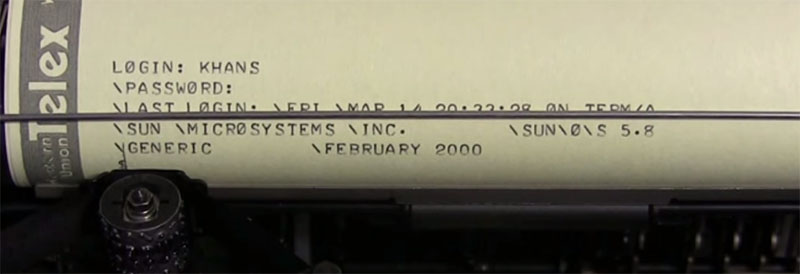We’re not quite to the 25th anniversary of the world wide web, but that doesn’t mean the greatest innovation in information distribution since [Gutenberg]’s press can’t be celebrated a bit early, does it? [Suhayl] is throwing some of his hardware into the ring, and loading up the first web page with a modem from the mid 1960s and a teletype from the mid 70s. No, no sane person would have ever done this 25 years ago, but it’s neat to watch in any event.
The hardware [Suhayl] is using includes a Livermore Data Systems modem. It’s a finely crafted wooden box with an acoustic coupler on top, and a DB-25 connector on a side that connects to a terminal or computer via RS-232. If that Livermore Data Systems acoustic coupler modem looks familiar, you might be right. This modem was demoed back in 2009 by [phreakmonkey]. It’s an impressive little box that can connect to a remote system at up to 300 baud.
The I/O is handled by an ASR-33 teletype. This was the standard way to connect to computers and mainframes before we were all blessed with video terminals and TV typewriters. The whole setup connects to a Unix system with a much more familiar Hayes modem, runs a text-only browser, and retrieves the first web page as it was served up at CERN some 25 years ago.
















Shall we play a game?
Left a comment on the YouTube page (hopefully not, but probably, being stupid) — 300 baud, not 300 bps. bps is a much newer measurement, and baud (which is characters per second) would be far more appropriate to the time.
Oh — interesting little tidbit — look up the Baudot code, if you want to know where the term ‘baud’ comes from :) interesting stuff (to me, at least)…
baud is the unit for symbols/second.
Actually its both 300 bps and 300 baud in this case.
bps is a unit of the rate of data transmission; baud is a unit of the rate of symbol transmission. If symbols contain more than 1 bit of information, then the bps rate would be greater than the baud rate. As modems became faster (and the bps rate exceeded the bandwidth of the phone line, it became necessary to squeeze more bits of data per symbol transmitted.
Here’s a simplification: Imagine that each symbol could be a pulse of 1 of 4 amplitudes (heights). Because of limitations of the phone line, you could only transmit a maximum of 8000 symbols per second (8 kHz bandwidth), but given that each symbol could be one of 4 values (e.g. contains 2 bits of information), you could still transmit 16k bits per second –so the baud rate would be 8000 baud, while the data rate would be 16000 bps.
Well if he really wants to impress people here he should access the HaD retro site.
*crumples up a sheet of paper*
Well there goes my idea.
I look at that image on HaD and can’t help but picture Cliff Stoll sitting in the basement of Berkeley watching such a setup print out text just like that…. (for those of you who don’t understand please read ‘The Cuckoo’s Egg’ by Cliff Stoll)